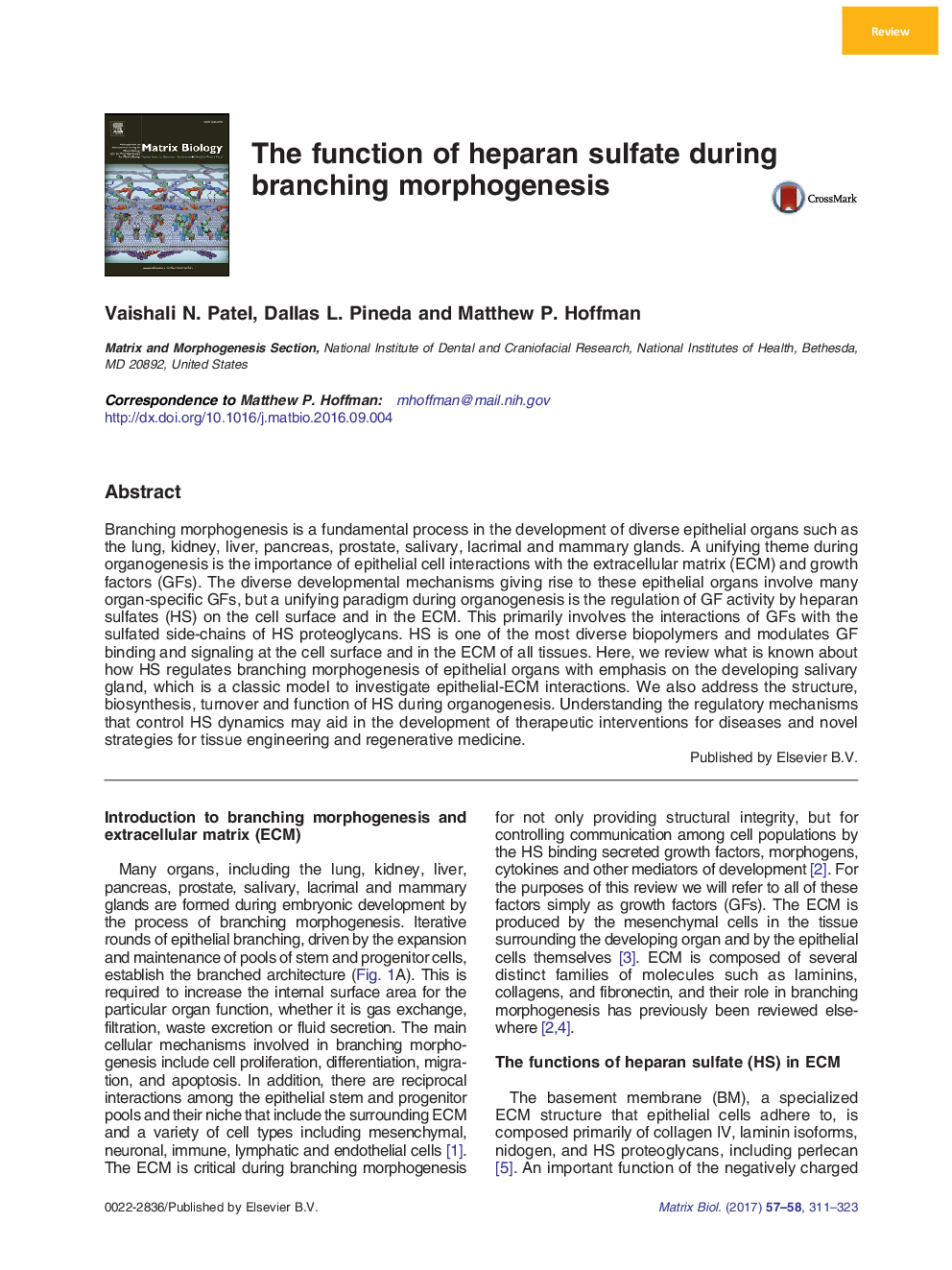| کد مقاله | کد نشریه | سال انتشار | مقاله انگلیسی | نسخه تمام متن |
|---|---|---|---|---|
| 5528537 | 1548003 | 2017 | 13 صفحه PDF | دانلود رایگان |
- Heparan sulfates (HS) regulate growth factor binding and signaling at cell surfaces and in the extracellular matrix
- HS have extreme structural heterogeneity due to diverse sulfation patterns established by sulfotransferase enzymes
- Sulfated structures on HS are critical determinants of growth factor specificity and function during branching morphogenesis
- Understanding HS function has therapeutic implications for cell- and GF-based regeneration and repair of branching organs
Branching morphogenesis is a fundamental process in the development of diverse epithelial organs such as the lung, kidney, liver, pancreas, prostate, salivary, lacrimal and mammary glands. A unifying theme during organogenesis is the importance of epithelial cell interactions with the extracellular matrix (ECM) and growth factors (GFs). The diverse developmental mechanisms giving rise to these epithelial organs involve many organ-specific GFs, but a unifying paradigm during organogenesis is the regulation of GF activity by heparan sulfates (HS) on the cell surface and in the ECM. This primarily involves the interactions of GFs with the sulfated side-chains of HS proteoglycans. HS is one of the most diverse biopolymers and modulates GF binding and signaling at the cell surface and in the ECM of all tissues. Here, we review what is known about how HS regulates branching morphogenesis of epithelial organs with emphasis on the developing salivary gland, which is a classic model to investigate epithelial-ECM interactions. We also address the structure, biosynthesis, turnover and function of HS during organogenesis. Understanding the regulatory mechanisms that control HS dynamics may aid in the development of therapeutic interventions for diseases and novel strategies for tissue engineering and regenerative medicine.
Journal: Matrix Biology - Volumes 57â58, January 2017, Pages 311-323
